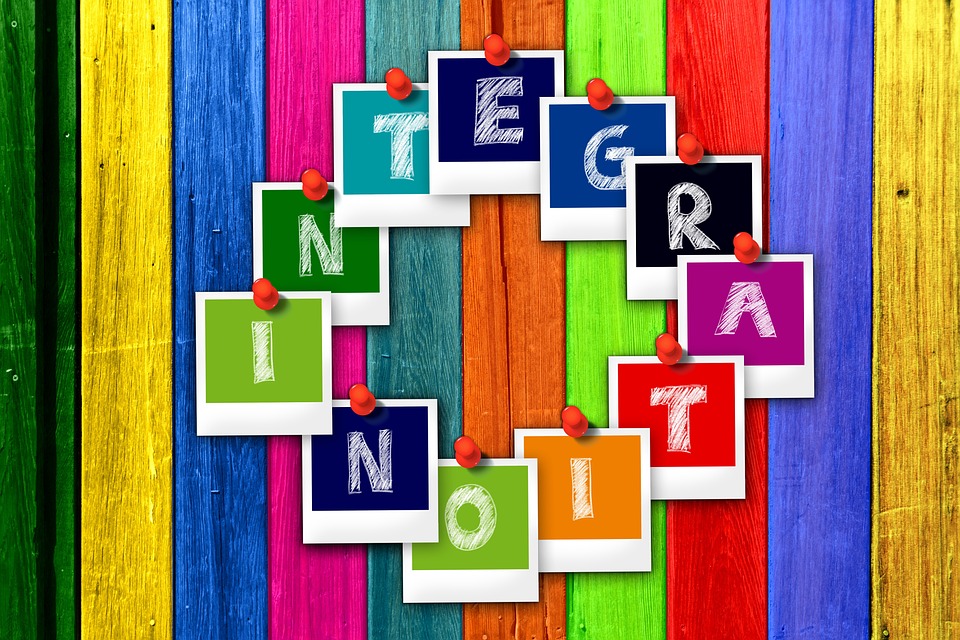Unlocking the Potential: Integrating Solar Power into the Grid
Solar power has emerged as a sustainable and environmentally-friendly alternative to traditional sources of energy. With advancements in technology and decreasing costs, solar energy has become increasingly accessible. As a result, integrating solar power into the grid has become a topic of great interest and importance. In this article, we will explore the potential of solar power and the challenges and opportunities associated with its integration into the grid.
The Potential of Solar Power
Solar power has significant potential to transform the energy landscape. The sun is an abundant and renewable source of energy that can be harnessed through photovoltaic (PV) panels and solar thermal systems. According to the International Energy Agency (IEA), solar energy could become the largest source of electricity by 2050, surpassing fossil fuels and other renewables.
One of the key advantages of solar power is its scalability. Solar panels can be installed on a variety of scales, from small residential systems to large utility-scale installations. This flexibility allows solar power to be integrated into a wide range of settings, making it a versatile energy source.
Challenges and Opportunities
Integrating solar power into the grid comes with its own set of challenges and opportunities. Let’s take a closer look at some of the key factors that influence the successful integration of solar energy into the grid:
- Variability: Solar power production is dependent on sunlight, which varies throughout the day and is affected by weather conditions. This variability can pose challenges for grid operators in managing supply and demand. However, advancements in energy storage technologies, such as batteries, are providing new opportunities to store excess solar energy and use it when needed.
- Grid Infrastructure: Integrating large amounts of solar power into the grid requires modernizing and upgrading the existing infrastructure. This includes improving transmission and distribution systems to accommodate the fluctuating nature of solar energy production. Smart grid technologies and digital solutions can help optimize the integration of solar power into the grid, making the system more flexible and resilient.
- Policy and Regulation: The regulatory environment plays a crucial role in the integration of solar power into the grid. Policy frameworks, incentives, and support mechanisms can drive investment in solar energy and encourage grid integration. For example, feed-in tariffs and net metering programs can provide financial incentives for solar power producers and consumers, promoting the uptake of solar energy.
Success Stories and Case Studies
Several countries and regions have made significant progress in integrating solar power into their grids, offering valuable insights and lessons for others to learn from. For example, Germany has been a global leader in solar energy deployment, with a high percentage of solar PV capacity integrated into its grid. The country has implemented policies such as feed-in tariffs and has invested in grid infrastructure to support the integration of solar power.
In the United States, California has made remarkable strides in integrating solar power into its grid, setting ambitious renewable energy targets and leading the nation in solar installations. The state has implemented innovative policies and programs to support the growth of solar energy, including incentives for rooftop solar installations and energy storage projects.
Conclusion
Integrating solar power into the grid presents both challenges and opportunities, but the potential rewards are significant. By addressing the variability of solar power, modernizing grid infrastructure, and implementing supportive policies, we can unlock the full potential of solar energy and transition towards a more sustainable and resilient energy system. With the right strategies and investments, solar power can play a crucial role in shaping the future of energy.
As we look towards a future powered by clean and renewable energy sources, the integration of solar power into the grid will be a key focus area for policymakers, grid operators, and energy stakeholders. By leveraging the lessons learned from successful case studies and embracing innovative solutions, we can pave the way for a brighter and more sustainable energy future.


Pingback: Unlocking the Potential: Integrating Solar Power into the Grid – Home Solar Sessions
магазин аккаунтов маркетплейс для реселлеров
услуги по продаже аккаунтов маркетплейс аккаунтов соцсетей
услуги по продаже аккаунтов маркетплейс аккаунтов соцсетей
маркетплейс аккаунтов соцсетей https://kupit-akkaunt-top.ru/
профиль с подписчиками заработок на аккаунтах
Buy Pre-made Account Accounts for Sale
Accounts marketplace Find Accounts for Sale
Account exchange Account Acquisition
Verified Accounts for Sale Sell Account
Buy accounts Account trading platform
Account Exchange Service Database of Accounts for Sale
Account trading platform Account Buying Service
Account Trading Platform buyaccounts001.com
Accounts market Account Selling Platform
purchase ready-made accounts account marketplace
purchase ready-made accounts account store
social media account marketplace buy pre-made account
sell accounts guaranteed accounts
account catalog buy accounts
buy pre-made account sell account
secure account sales account sale
website for selling accounts online account store
database of accounts for sale account trading platform
account selling service account sale
online account store ready-made accounts for sale
sell pre-made account sell accounts
purchase ready-made accounts account selling service
accounts marketplace accounts-for-sale.org
account trading platform website for selling accounts
gaming account marketplace account exchange service
purchase ready-made accounts online account store
account store website for selling accounts
website for buying accounts guaranteed accounts
gaming account marketplace account selling platform
social media account marketplace website for selling accounts
account exchange service account trading platform
account trading platform profitable account sales
account buying platform account trading service
account trading account purchase
account selling platform account buying service
account trading service account exchange service
gaming account marketplace https://accounts-offer.org
purchase ready-made accounts account marketplace
social media account marketplace https://social-accounts-marketplaces.live
accounts for sale https://accounts-marketplace.live
sell accounts https://social-accounts-marketplace.xyz/
accounts for sale https://buy-accounts.space
account acquisition https://buy-accounts-shop.pro/
accounts marketplace https://buy-accounts.live
purchase ready-made accounts accounts marketplace
website for selling accounts https://social-accounts-marketplace.live
account catalog account marketplace
продать аккаунт https://akkaunty-na-prodazhu.pro
биржа аккаунтов https://rynok-akkauntov.top/
маркетплейс аккаунтов https://kupit-akkaunt.xyz/
маркетплейс аккаунтов https://akkaunt-magazin.online
покупка аккаунтов akkaunty-market.live
маркетплейс аккаунтов соцсетей магазины аккаунтов
маркетплейс аккаунтов https://akkaunty-optom.live/
продать аккаунт online-akkaunty-magazin.xyz
площадка для продажи аккаунтов https://akkaunty-dlya-prodazhi.pro
биржа аккаунтов kupit-akkaunt.online
cheap facebook account buy old facebook account for ads
buy facebook ad account buy facebook ads account
facebook ad account for sale https://buy-ad-account.top
buy ad account facebook https://buy-ads-account.click
fb accounts for sale https://ad-account-buy.top
buy fb ad account buy a facebook account
facebook accounts for sale buy facebook advertising
buy facebook advertising accounts https://buy-ad-account.click
buy aged facebook ads accounts https://ad-accounts-for-sale.work
buy google ads invoice account https://buy-ads-account.top
buy aged google ads account https://buy-ads-accounts.click
facebook ad accounts for sale https://buy-accounts.click/
buy google ads account https://ads-account-for-sale.top
buy google ads threshold accounts https://ads-account-buy.work/
buy account google ads https://buy-ads-invoice-account.top
buy google ads threshold accounts https://buy-account-ads.work
google ads accounts https://buy-ads-agency-account.top
old google ads account for sale https://sell-ads-account.click
buy google ads invoice account https://ads-agency-account-buy.click/
buy facebook bm https://buy-business-manager.org/
buy google adwords accounts buy-verified-ads-account.work
buy fb business manager facebook business manager for sale
buy verified bm https://buy-verified-business-manager-account.org/
facebook bm account https://buy-verified-business-manager.org
buy facebook bm account https://buy-business-manager-acc.org
facebook bm for sale https://business-manager-for-sale.org/
buy fb business manager buy-business-manager-verified.org
buy verified facebook business manager https://buy-bm.org/
buy verified business manager facebook https://buy-business-manager-accounts.org/
buy tiktok ads accounts https://buy-tiktok-ads-account.org
buy verified facebook business manager https://verified-business-manager-for-sale.org/
buy tiktok ads account https://tiktok-ads-account-buy.org
buy tiktok ads https://tiktok-ads-account-for-sale.org
buy tiktok ads accounts buy tiktok business account
tiktok ad accounts https://buy-tiktok-ad-account.org
buy tiktok business account tiktok ads agency account
buy tiktok ad account https://tiktok-ads-agency-account.org
buy tiktok ads account https://buy-tiktok-business-account.org
buy tiktok ads https://buy-tiktok-ads.org
facebook ad account for sale account sale purchase ready-made accounts
buy facebook ads manager account trading platform sell pre-made account
I don’t think the title of your article matches the content lol. Just kidding, mainly because I had some doubts after reading the article.
Thanks for sharing. I read many of your blog posts, cool, your blog is very good.
Can you be more specific about the content of your article? After reading it, I still have some doubts. Hope you can help me.